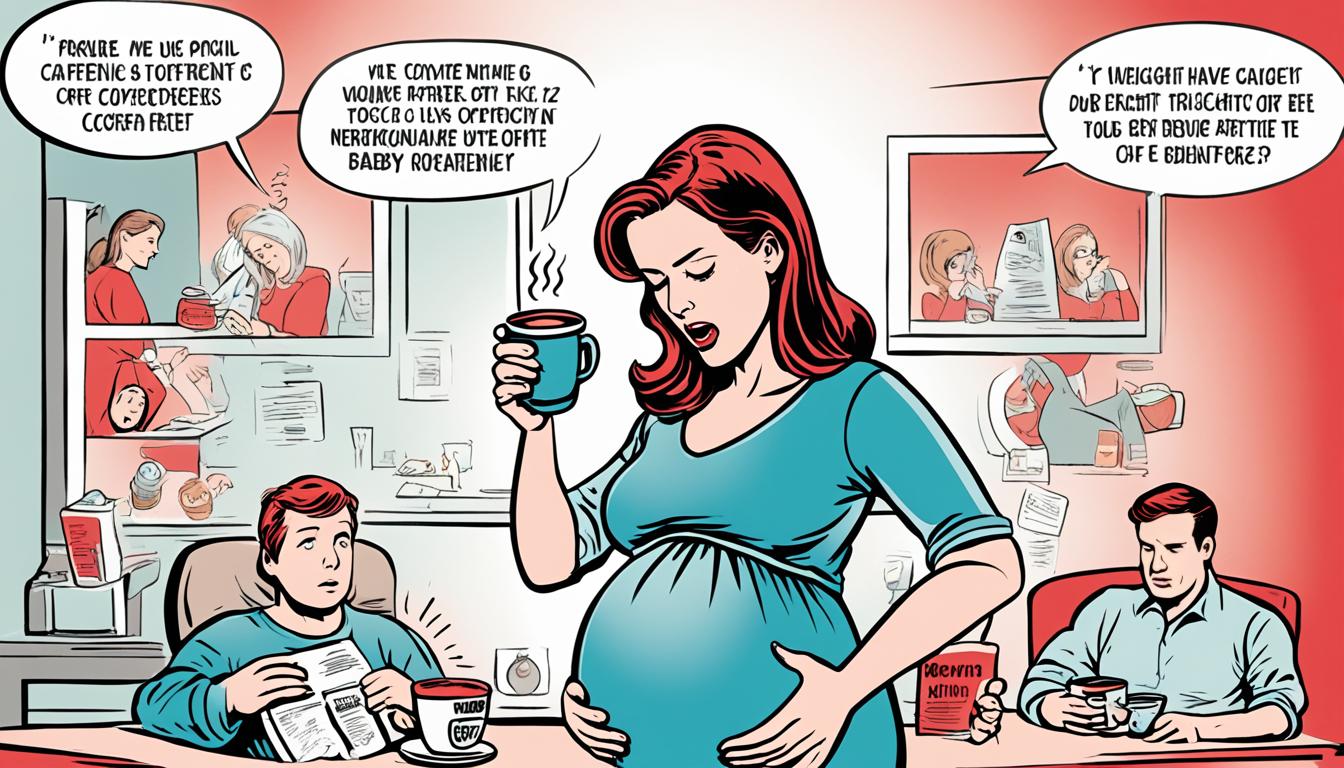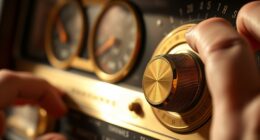When enjoying coffee with aligners on, it is important to prioritize safety in order to prevent stains and warping. Make sure to take out your aligners before drinking coffee, and make a commitment to wearing them for at least 20-22 hours every day. When consuming coffee, do so quickly within 15-30 minutes, and remember to rinse or brush your teeth afterwards. Avoid sugary or creamy coffee choices, and consider using a straw to minimize contact between the coffee and your aligners. Regularly clean your aligners to avoid stains and bacterial build-up. By following these instructions, you can minimize the risk of damaging your aligners and jeopardizing your orthodontic treatment. For more tips on maintaining a healthy coffee routine while wearing aligners, continue reading.
Key Takeaways
• Remove aligners before drinking coffee to prevent stains and warping.
• Drink coffee quickly within 15-30 minutes to minimize exposure.
• Rinse or brush teeth after consuming coffee to prevent stains and bad breath.
• Opt for lukewarm or cold coffee to prevent warping and staining.
• Clean aligners regularly with a gentle solution to prevent staining and plaque buildup.
Removing Aligners for Coffee
When you're craving a cup of coffee, take out your aligners beforehand to prevent unwanted stains and warping. Removing your aligners before drinking coffee is vital to maintain their effectiveness and your oral hygiene.
Drinking coffee while wearing your Invisalign trays can lead to stubborn stains and potentially warp the aligners, which may require replacement. To avoid these issues, simply take out your aligners before enjoying your coffee.
After you're done, rinse or brush your teeth and clean your aligners to uphold good oral hygiene. Remember, it's necessary to wear your aligners for at least 20-22 hours per day, even if you take them out for coffee.
Avoiding Stains and Bad Breath

By removing your aligners before drinking coffee, you've taken the first step in maintaining good oral hygiene, but now it's time to focus on avoiding stains and bad breath. As you enjoy your coffee, it's crucial to take extra precautions to prevent stains and bad breath while wearing Invisalign.
To guarantee your aligners and teeth remain stain-free, follow these simple tips:
- Rinse your mouth with water after drinking coffee to prevent staining and bad breath.
- Brush your teeth after consuming coffee to maintain oral hygiene and reduce the risk of cavities.
- Consider using a straw to drink coffee to minimize contact with your aligners and teeth.
- Opt for lighter coffee options to reduce the potential for staining while wearing aligners.
- Clean your aligners regularly to prevent coffee stains and maintain their transparency.
Coffee Consumption Guidelines

To safely enjoy your morning coffee while wearing Invisalign, you'll want to follow some important guidelines that minimize the risk of staining, discoloration, and other oral health issues.
One key tip is to drink your coffee quickly, within 15-30 minutes, to reduce the contact time between the coffee and your aligners.
Additionally, it's important to remove your aligners before drinking coffee to prevent discoloration and warping.
When you do drink coffee, try to limit the amount of cream and sugar you add, as these can contribute to bacterial growth and oral health problems.
After consuming coffee, make sure to rinse or brush your teeth to prevent staining and plaque buildup.
Protecting Your Aligners

Now that you're aware of the coffee consumption guidelines, it's crucial to focus on protecting your aligners.
You'll need to learn how to handle hot beverages safely, master the art of aligner removal, and develop a cleaning routine after coffee consumption.
Handling Hot Beverages
As you sip your morning coffee, the scorching hot liquid can secretly sabotage your orthodontic progress, putting your aligners at risk of warping and misshapenness. Hot beverages like coffee can warp Invisalign trays over time, affecting their fit and effectiveness. To protect your aligners, it's best to avoid drinking hot coffee while wearing them.
Here are some tips to handle hot beverages safely with aligners:
- Avoid drinking hot coffee while wearing your aligners to prevent warping and misshapenness.
- Opt for lukewarm or cold coffee, which is a safer option to maintain the shape of your Invisalign trays.
- Limit your intake of hot beverages to ensure your Invisalign treatment progresses smoothly.
- Be mindful of the temperature of your coffee to prevent potential damage to your aligners.
- By taking these precautions, you can prevent damage to your aligners and stick to your treatment schedule.
Aligner Removal Tips
By removing your aligners before drinking coffee, you can safeguard them against staining and warping, ensuring your Invisalign treatment stays on track. This important step is essential in preventing permanent discoloration and maintaining the integrity of your Invisalign trays.
When you're not wearing your aligners, store them safely in their case to prevent loss or damage. To minimize the time without your aligners, try to drink your coffee quickly within 15-30 minutes. Remember to rinse or brush your teeth after consuming coffee to prevent discoloration and maintain good oral hygiene.
By following these tips, you'll be able to enjoy your coffee while protecting your aligners from harm. Don't risk compromising your Invisalign treatment – remove your aligners before drinking coffee and store them safely when not in use. Also, be sure to clean your aligners regularly to remove any coffee residue that may have built up. This will help keep your aligners clear and prevent staining. Additionally, consider the benefits of drinking lishou coffee at night, as it can help promote relaxation and better sleep. Taking these precautions will ensure that your Invisalign treatment stays on track while still allowing you to enjoy your favorite coffee.
With these simple precautions, you can enjoy your favorite beverage while keeping your teeth and aligners healthy and stain-free.
Cleaning After Coffee
After enjoying your coffee, you should immediately rinse your aligners with lukewarm water to prevent staining and plaque buildup. This critical step helps maintain the appearance and longevity of your aligners.
Sugar in coffee can lead to discoloration, so it's important to clean your aligners promptly.
To guarantee your aligners remain clear and unnoticeable during your treatment, follow these proper cleaning routines:
- Clean your Invisalign with a gentle cleaning solution to remove any sugar residue
- Rinse your aligners with lukewarm water to prevent staining and plaque buildup
- Use a soft-bristled toothbrush to gently scrub away any stubborn stains
- Soak your aligners in a cleaning solution for 15-30 minutes to deep clean
- Dry your aligners thoroughly to prevent water spots and bacterial growth
Coffee and Invisalign Safety

As you navigate the world of coffee and Invisalign, it's crucial to understand the potential risks involved.
You'll want to be aware of how coffee can stain your teeth and aligners, and how to avoid common pitfalls that can compromise your orthodontic treatment.
Coffee Stains Teeth
When you drink coffee regularly, you're not only risking stains on your teeth, but also on your Invisalign trays, which can compromise their appearance and effectiveness. Coffee stains can be particularly problematic for clear aligners, as they can become more noticeable over time. To prevent this, regular cleaning and maintenance are essential.
Here are some key points to keep in mind:
- Coffee consumption can lead to staining on both teeth and aligners
- Clear aligners are more prone to staining, making regular cleaning vital
- Drinking water is recommended to avoid warping your Invisalign trays
- Regular cleaning can help prevent coffee stains on teeth and aligners
- Coffee consumption increases the risk of cavities and bad breath, especially when wearing Invisalign
Avoiding Coffee Traps
To safely enjoy coffee while wearing Invisalign, you must prioritize cleaning your aligners regularly and storing them safely when not in use. This will help prevent bacterial buildup and reduce the risk of tooth decay.
Additionally, taking steps to reduce staining, such as rinsing your mouth and aligners with water after consuming coffee, can help maintain the appearance of your teeth and aligners.
By being mindful of these potential pitfalls, you can enjoy coffee without compromising your oral health or the integrity of your aligners.
Rinsing After Coffee
You should rinse your mouth with lukewarm water immediately after drinking coffee to remove sugars and bacteria that can cause plaque buildup and discoloration on your aligners. This practice is essential in maintaining the cleanliness and appearance of your Invisalign trays.
Coffee is acidic, and its sugars can cause damage to your teeth and aligners if not properly rinsed away.
To guarantee the longevity of your aligners and overall oral health, make rinsing after coffee a routine. Here's why:
- Rinsing after coffee helps remove sugars and bacteria that cause plaque buildup and discoloration on aligners.
- Lukewarm water is recommended for rinsing after coffee consumption to preserve the appearance and cleanliness of Invisalign trays.
- Regular rinsing after drinking coffee can help prevent staining on both teeth and aligners, preserving their integrity and aesthetics.
- Proper rinsing after coffee intake freshens breath, protects against tooth decay and gum disease, and safeguards aligners from potential damage.
- Developing a habit of rinsing after coffee can contribute to better oral hygiene and overall maintenance of your teeth and Invisalign trays.
Tips for Coffee Lovers

By taking a few precautions, coffee lovers can continue to indulge in their daily cup while safely wearing their aligners. As a coffee lover undergoing Invisalign treatment, you're not alone in your daily craving. However, you're at a higher risk of staining or warping your aligners if you don't take the necessary precautions.
To Drink Coffee While Wearing your aligners, it's essential to Take Your Trays out beforehand to prevent staining and warping. As a good candidate for Invisalign treatment, you're already committed to wearing your aligners for 20-22 hours a day. To accommodate your coffee cravings, adjust your lifestyle to minimize contact with your aligners.
Drink your coffee quickly, within 15-30 minutes, to reduce the risk of damage. Additionally, rinse or brush your teeth after consuming coffee to maintain good oral hygiene. By following these guidelines, you can safely enjoy your daily cup of coffee while undergoing Invisalign treatment.
Cleaning Stained Aligners

After safely enjoying your coffee, you'll need to clean your aligners regularly to remove any stubborn stains that may have developed. Failing to do so can lead to discoloration and bacterial buildup, compromising the effectiveness of your orthodontic treatment.
To clean your stained aligners, follow these essential steps:
- Use a soft toothbrush to gently clean stained aligners, avoiding abrasive materials that can scratch the surface.
- Avoid using hot water, which can warp or deform your aligners.
- Consider using Invisalign cleaning crystals for tough stains that require extra attention.
- Soak aligners in a denture cleaning solution for a deep clean.
- Regularly rinse aligners with lukewarm water to prevent discoloration and maintain their clarity.
Safe Coffee Consumption Habits

To minimize the impact of coffee on your orthodontic treatment, develop safe consumption habits that prioritize aligner protection and oral hygiene. By following these guidelines, you can still drink coffee while wearing Invisalign trays without compromising your orthodontic treatment.
| Safe Habit | Why It Matters |
|---|---|
| Remove aligners before drinking coffee | Prevents staining and warping of aligners |
| Drink coffee quickly (15-30 minutes) | Minimizes contact time with aligners |
| Rinse or brush teeth after consuming coffee | Maintains oral hygiene and reduces risk of tooth decay |
| Avoid sugary or creamy coffee options | Reduces bacterial growth in aligners |
Frequently Asked Questions
How to Drink Coffee With Aligners?
When you want to drink coffee with aligners, remember to remove them first to prevent staining and warping.
Take a break from wearing them for 15-30 minutes to quickly enjoy your coffee.
Afterward, rinse or brush your teeth to maintain good oral hygiene.
Opt for black coffee to reduce cavity risks.
Then, put your aligners back on to make sure you're wearing them for at least 20-22 hours a day for effective treatment.
Can I Drink My Coffee Through a Straw With Invisalign?
You're wondering if you can drink your coffee through a straw with Invisalign. The answer is yes, you can!
In fact, using a straw is a great way to minimize direct contact between the coffee and your aligners. This helps prevent stains and keeps your aligners clear and less noticeable.
What Is a Coffee Alternative for Invisalign?
While you may crave the rich flavor of coffee, it's important to weigh the risks it poses to your Invisalign aligners and teeth.
Fortunately, you can opt for a safer alternative: herbal or green tea. With lower acidity levels and a wide range of flavors, tea offers a pleasant substitute for coffee.
Do I Have to Give up Coffee With Invisalign?
You don't have to give up coffee entirely while wearing Invisalign, but you do need to take precautions. Limit your coffee consumption to avoid warping your aligners, and clean them thoroughly afterward to prevent discoloration and plaque buildup.
Rinsing your mouth with water and opting for lighter coffee options can also help minimize staining and maintain good oral hygiene.
Conclusion
As you sip your morning coffee, remember that your aligners are like delicate flowers, requiring gentle care to thrive.
By following these guidelines, you'll be able to enjoy your daily cuppa while keeping your aligners stain-free and your breath fresh.
By being mindful of your coffee habits, you'll be able to savor every sip, knowing your orthodontic journey is on track.
With these tips, you can have your coffee and wear your aligners too, ensuring a beautiful, healthy smile that's the perfect blend of style and confidence.









